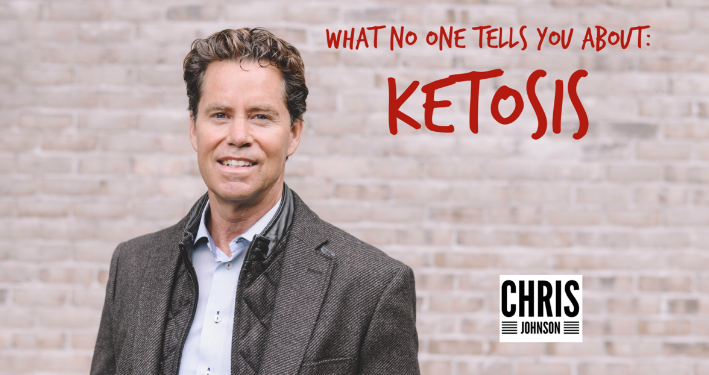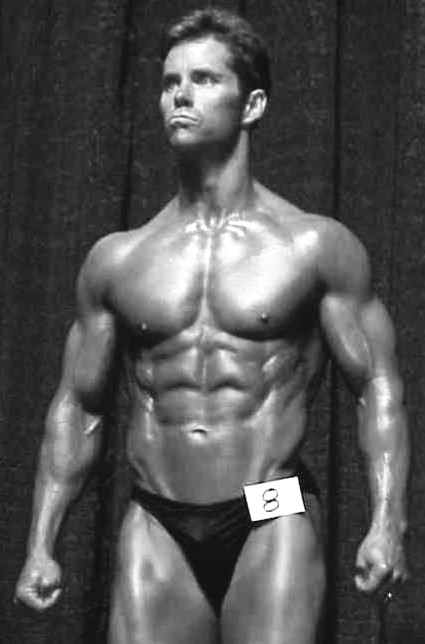The answer is definitely NO, but it’s not that simple. Here, my Dad and founder/CEO of On Target Living shares his insight on this hot topic after 35 years in in the health and fitness industry.

Sharing Success: Women In Business
March 28, 2018
BBQ = Better Be Quick
May 28, 2018Weight Loss Craze
Today, approximately 100 million people in the United States are currently on some type of diet to lose weight and spending upwards of $70 billion dollars a year on weight loss related products and services. The craziest stat of all—the weight loss industry has a failure rate of over 90%—people are losing weight, but they are not keeping it off and they are not getting healthier!
The weight loss industry has a failure rate of over 90%
After spending more than 35 years in the health and fitness industry, and watching numerous nutritional strategies come and go I’ve learned that diets don’t work. This is why there is always a new diet on the market and another one on its way! Let’s take a quick journey back in time—some of these strategies are scary and some may even look a little familiar?
1820’s—Lord Byron popularizes the Vinegar and Water Diet—which entails drinking water mixed with Apple Cider Vinegar. Lord Byron would be happy to see apple cider vinegar making a powerful comeback!
1920’s—The Lucky Strike cigarette brand launches the “Reach for a Lucky instead of a sweet” this campaign tried to capitalize on nicotine’s appetite-suppressing superpower. Did people really believe that smoking would help them lose weight?
1950’s—The Cabbage Soup Diet promises you can lose 10-15 pounds in a week by eating a limited diet including cabbage soup every day. Must have been in the bathroom a lot!
1960’s—Weight Watchers makes its debut with the Point System! Great way to keep you aware of the quantity of food you consume. Weight Watchers has been upgraded over the years, and today is a pretty solid program to keep you focused.
1970’s—Scarsdale Medical Diet, Slim Fast, and one of my favorites—the Cookie Diet, a plan where you eat cookies made with a blend of amino acids (high protein) and Hollywood eats it up!
1980’s—High-Carb, Low-Fat movement begins—if a food was fat-free or low-fat it was a go! McDonalds introduced the McLean Deluxe low-fat burger, Snack Well Cookies, Less Bread, Entenmanns low-fat coffee cake, muffins, bagels, and the no-fat frozen yogurt—there even was a Seinfeld episode on the no-fat yogurt craze—Jerry’s pants were getting tight! Obesity and Type 2 Diabetes began to explode—what were we thinking?
1990’s—High-Protein, Anti-Carb movement hits the U.S. The Atkins and South Beach era take hold—high-protein has now become the answer, and carbs become the villain. You can eat all the protein you want, eggs, dairy, bacon, hot dogs, beef, chicken, meat, meat, and more meat, just stay away from the bun! If the food or beverage was high in protein and low in carbs it was a green light! On this high-protein, low-carb diet, hair became thin and brittle, skin felt like sandpaper, breath smelled like nail polish, low mood, trouble sleeping, constipated, acid reflux, breath smells like nail polish remover—but hey look at me, I look good!
2000’s—The FDA bans diet drugs and supplements containing Ephedra after it’s linked to heart attacks. Alli hits the market, a nonprescription drug that is taken with meals to keep your body from absorbing some of the food you eat—seriously gang—this was not that long ago!
2010’s—The HCG Diet, which combines a fertility drug with a strict 500-800 calorie a day regimen and no exercise required to lost one pound a day for 30-days! Imagine what is truly going on inside your body following this plan?
The reason we do what we do at On Target Living is because we want to help give people the results they are looking for. What if you could live your best self, feel great, and have boundless energy without dieting? Well, the good news is you can!
Let’s breakdown the most popular diet on the market today—The Ketogenic Diet, or what is called Ketosis and why it will never give you the life you deserve, and how you can live a diet-free life that’s fun and sustainable.
Ketogenic Diet
One of the fastest growing diet plans in the U.S. today is the Ketogenic or low carbohydrate diet. The ketogenic diet has been around for decades as a very specific treatment plan for epilepsy. Over the last few years the Ketogenic Diet has been gaining in popularity for its claims for quick weight loss, gains in energy, mental clarity, and to decrease food cravings. The Ketogenic Diet severely reduces carbohydrate intake while increasing fat intake, low-carb, high-fat.
Let’s dive into this conversation a little deeper. Your body uses energy to simply stay alive, this is called your basal metabolic rate (BMR). As we move throughout our day or add exercise to the mix, the need for more energy increases. Most of our energy usually comes from the food we eat. The three macronutrients, carbohydrates, proteins, and fats are where the bulk of our energy comes from. This is where the chemistry lesson begins and how amazing the human body is designed. When we eat carbohydrates, they are broken down into glucose and used for immediate energy. If your energy need is already fulfilled, carbohydrates may then be stored as glycogen in your muscles and liver. If your energy demands are met and your glycogen reserves are already at capacity, carbohydrates may then be stored as fat. Your glycogen capacity hovers at approximately 2000 calories, this is a reserve and can be used immediately as the energy demand rises, this process is call Glycolysis (a breakdown of glycogen into glucose).
The goal of the Ketogenic Diet is to severely restrict carbohydrate intake, deplete the bodies glycogen stores, and force the body to draw on its own fat reserves for its primary fuel source. If there is not enough glucose available to meet energy demands, the body will adopt an alternative strategy in order to meet those demands, this process is called Gluconeogenesis (a generation of glucose from non-carbohydrate food sources). As the body begins to breakdown fat stores to provide glucose, ketone levels in the blood begin to rise. Ketones are a potentially toxic-by product of partially burned fatty acids that the body has used as an alternative fuel source when carbohydrates are not available. These acids slowly build up in the blood and are eliminated in the urine and through the breath. In small amounts, they serve to indicate the body is breaking down fat, but high levels of ketones can poison the body, leading to a process called ketoacidosis.
As the body begins to breakdown fat stores to provide glucose, ketone levels in the blood begin to rise.–“KETOSIS”
Getting Leaner
In today’s world of nutrition, the word “Carbohydrate” has become demonized. The word on the street, if you want to get leaner, have greater mental clarity, and perform at your best, you need to cut the “Carbs”! Let’s step back and start asking some better questions? Many people have been led to believe that when you cut out carbs you will lose weight, this may be true in the short term, but is not sustainable. Many believe that when you increase your fat or protein intake and decrease your carb intake, you are teaching your body to burn fat as the major fuel source. Many believe that consuming carbs and the ability to burn fat do not go together. The truth is, you can burn fat by also consuming carbs—my Exercise Physiology Professor, Dr. Kwok Ho, told his students over and over, “fat burns in a carbohydrate flame”. Not only do carbohydrates provide energy for working muscles, they also assist in enabling fat metabolism.
“fat burns in a carbohydrate flame”
I have personally competed in 8-Natural Bodybuilding contests starting back in 1985 and my most recent contest was in 2013 at the age of 56 (Image on the left). Here is a little snapshot of what I learned along the way. My first contest was in 1985—Mr. Lansing. I followed the traditional bodybuilding diet, bulk up, and then cut down. My eating plan consisted of a diet high in protein, moderate fat, and the last 8 weeks leading up to the contest I carb depleted—virtually no carbs (ketogenic diet). Three days prior to the contest I carb loaded, adding carbohydrates back into my diet to fill the muscles with glycogen and water, I was shredded on stage, but I was totally miserable. I was dehydrated, my skin was dry, sleep had become a problem, developed acid reflux, and was grouchy and tired. This was the last time I wanted to experience this type of misery, and said to myself— “this type of eating is not healthy, there has to be a healthier way to get in great shape”? My next contest my goal was to get in great shape but to also have vibrant health, so I changed my approach. I ate in the center of the Food Target for 3-months with a balance of high quality carbohydrates, proteins and fats. The results were fantastic, I got in great shape and had the vibrant health I was also looking for!
Health and Performance
When you start taking a macro nutrient out of your diet you will develop a macro problem, this includes carbohydrates, proteins, and fats. The human body needs a balance of all of three of these macronutrients for optimal health and performance.
Let’s begin with the brain. Ideally, the human brain needs approximately 100 grams (400 calories) of carbohydrates per day to fuel the brain. When any of the three macronutrients, carbohydrates, proteins, or fats, become compromised, Serotonin, Dopamine, Gaba, and Norepinephrine, the brain neurotransmitters that regulate mood, may become out of balance. Serotonin and Gaba are the brain neurotransmitters that cool or relax, the central nervous system. Dopamine and Adrenaline on the other hand are the brain neurotransmitters that stimulate or rev-up, the central nervous system. One of the Ketogenic Diet claims is that a diet high in fat and low in carbs, clears up brain fog and helps you to concentrate better? This may be true if you are eating a bunch of processed, unhealthy sources of carbohydrates, you most likely will be lethargic and lack focus, but what is not being discussed is the quality and quantity of the carbohydrates being consumed? Now imagine what is taking place inside the brain when a person eats a diet deficient in high quality carbohydrates? Serotonin and Gaba, the brain neurotransmitters that cool or relax the brain become compromised, leading to problems of quieting the brain, “the mind begins to race”, staying asleep becomes a major problem, and anxiety starts to creep in. On the other side of the ledger, if all you eat is carbohydrates, especially processed carbohydrates, with little protein or fat, Dopamine and Adrenaline become compromised leading to a lethargic mind and body.
When you take carbohydrates out of your nutritional plan other imbalances begin to occur. A diet low in carbohydrates such as fruits, vegetables, ancient grains and starchy carbohydrates, will not only cause the body to be deficient in valuable vitamins and minerals, but also cause your body to move toward the acid side of the pH scale, leading to a depletion of your precious buffering minerals such as calcium, magnesium, and potassium. These buffering minerals become depleted quickly trying to bring your pH back into balance. This high acid level also begins to wreak havoc on your gut health, digestion, immune system, allergies, asthma, acid reflux, gout, high blood pressure, and your blood work. High acid levels will elevate your Homocysteine and High Sensitive C-Reactive Protein, two blood tests that measure oxidation and inflammation, risk factors for heart disease and cancer.
When you take carbohydrates out of your diet not only does your health become compromised so does your Capacity! We just came off writing a book titled “Capacity”—expanding human capacity by building greater health. As your health improves so does you’re your Capacity—you have more in your tank when it is needed. This takes me back to my Exercise Physiology lab days at Michigan State University when we did V02 max testing on the treadmill. V02 max is a test that measures the amount of oxygen that a person can utilize during intense, maximal effort. Most of us experiencing this test of endurance would have trouble sleeping the night before—this was a brutal test of grit and stamina. We would also measure Respiratory Quotient—this was a measurement of what fuel sources your body was using as the intensity of the exercise increased. If you truly had a V02 max test, your RQ would get close to 1.0, this revealed the body was using almost 100% carbohydrates as its preferred fuel source. The human body at its greatest demand will move to the most efficient fuel source, and that my friends are carbohydrates. Fat is a great fuel source for taking a long walk in the woods or sitting at your computer—but if you need that extra gear—that expanded capacity for greater performance, carbohydrates are the high-octane fuel you are looking for!
Fat is a great fuel source for taking a long walk in the woods or sitting at your computer—but if you need that extra gear—that expanded capacity for greater performance, carbohydrates are the high-octane fuel you are looking for!
Benefits of Consuming High-Quality Carbohydrates
I think by now most people are aware of the health benefits of consuming high-quality fats such as coconuts, avocados, almonds, walnuts, macadamia nuts, olives, chia seeds, flaxseeds, hemp seeds, pumpkin seeds, Brazil nuts, and cod liver oil to name a few. Some of the benefits of consuming healthy fats include, brain health, heart health, decrease in inflammation, and hormonal balance. A nutritional plan deficient in healthy fats or proteins will compromise the health and performance of the human body.
The health benefits of consuming high-quality carbohydrates, such as fruits, vegetables, ancient grains, starchy carbohydrates, and legumes, include greater gut health, pH balance, greater energy, regular elimination, better sleep, lower blood pressure, decreased inflammation, lower oxidation, heart health, brain health, improved mood, and greater health, high-quality carbohydrates are essential for greater health and performance!
Bottom line—don’t be afraid of the “Big Bad Carbohydrate Wolf”! Remember, not all carbohydrates are created equal. Try to focus on eating your macronutrients closer to the original source (the two green circles in the center of the Food Target)
If your goal is to have greater energy, a leaner and more attractive body, and most importantly, vibrant health, follows these simple principles;
1. Water–Drink more water
2. Superfoods–Add a few superfoods to your current nutritional plan, omega 3 fats, frozen wheatgrass, spirulina/chlorella, greens, cacao, coconut, colorful fruits and vegetables, sweet potatoes, ancient grains, nuts and seeds.
3. Upgrade–Eat a balance of high-quality carbohydrates, proteins, and fats—use the Food Target as your guide.
4. Timing/Frequency of Eating–Fast for 12-14 hours each day (7pm-7am) to allow the body to clean itself. Then try to eat 3-4 small meals every 3-4 hours.
5. Quantity—Calories do matter, focus on quality first and develop an awareness of your quantity.
6. 80/20 Rule—You don’t have to be perfect, your goal is to develop a plan that you can you enjoy and can live with!
7. Learn how to Pivot and Enjoy the Journey—This is your plan, make mistakes, try new foods, and most importantly enjoy the process!
As my daughter Kristen likes to say, “use your common sense when it comes to new diets and food trends. If you can’t feed a diet to five-year old child, it’s probably not a healthy option. If you can eat as much bacon as you want but can’t eat a bowl of oatmeal or a piece of fruit, probably not a good thing either. Trust your gut, because it is always right”!
If you can’t feed a diet to five-year old child, it’s probably not a healthy option.
Wishing you a life of vibrant health and happiness!
Chris Johnson- A 60 year-old grandpa on a mission to help people feel and perform their best!
Chris Johnson is the founder and CEO of On Target Living, a global health and performance company on a mission to improve the health & performance of humans one-person and one-organization at a time. He is a highly sought after keynote speaker and wants everyone to experience “THE POWER OF FEELING THEIR BEST” www.chrisjohnsonspeaker.com








